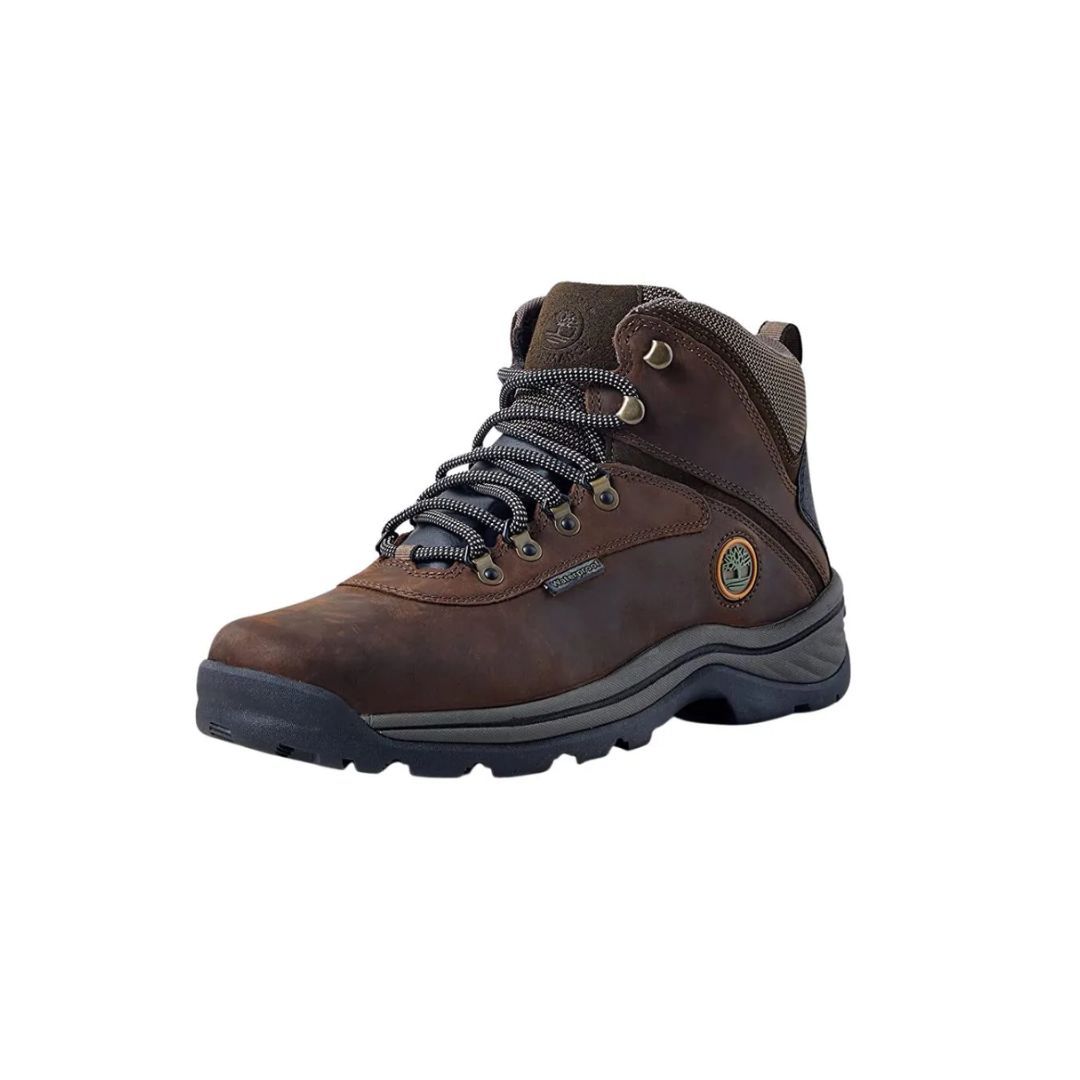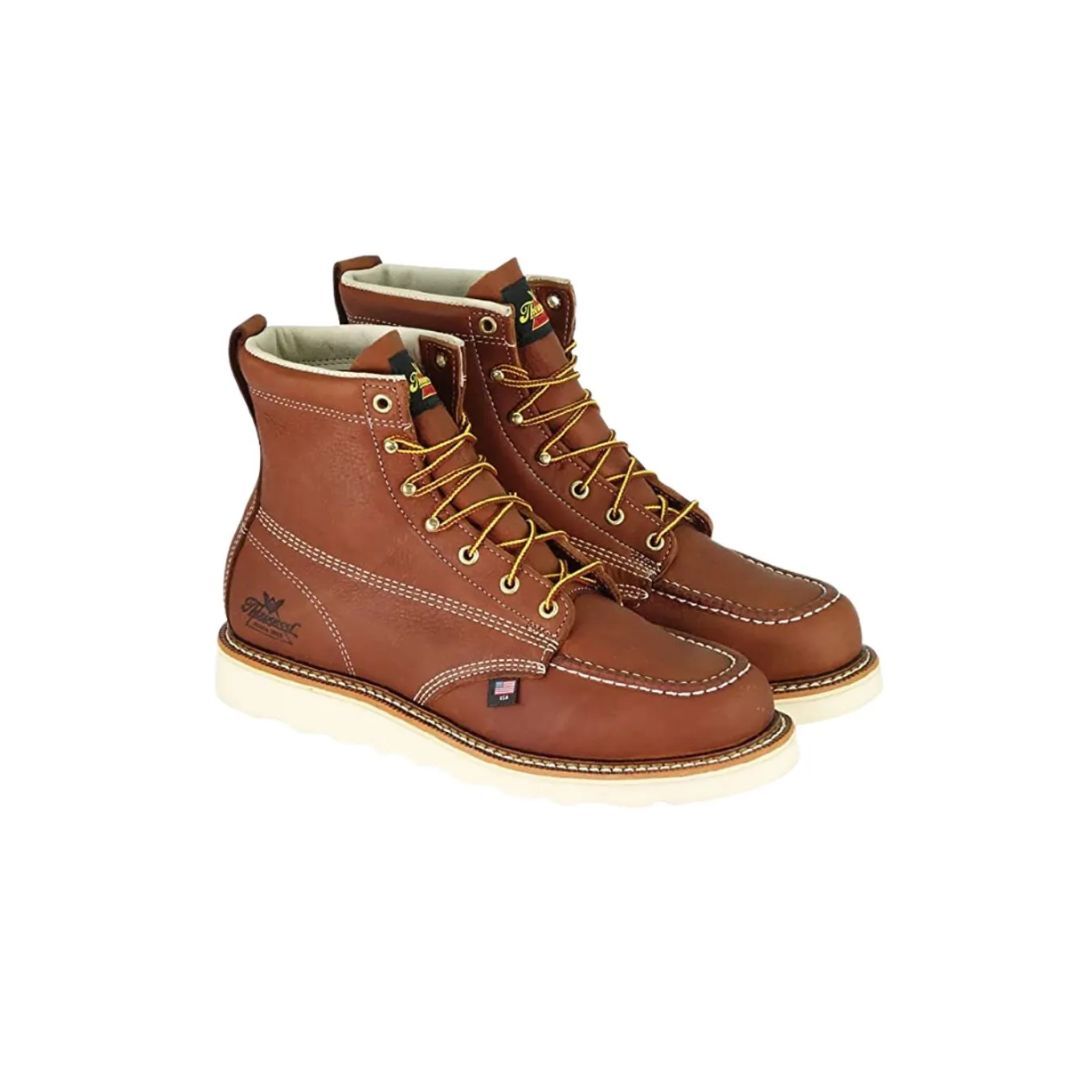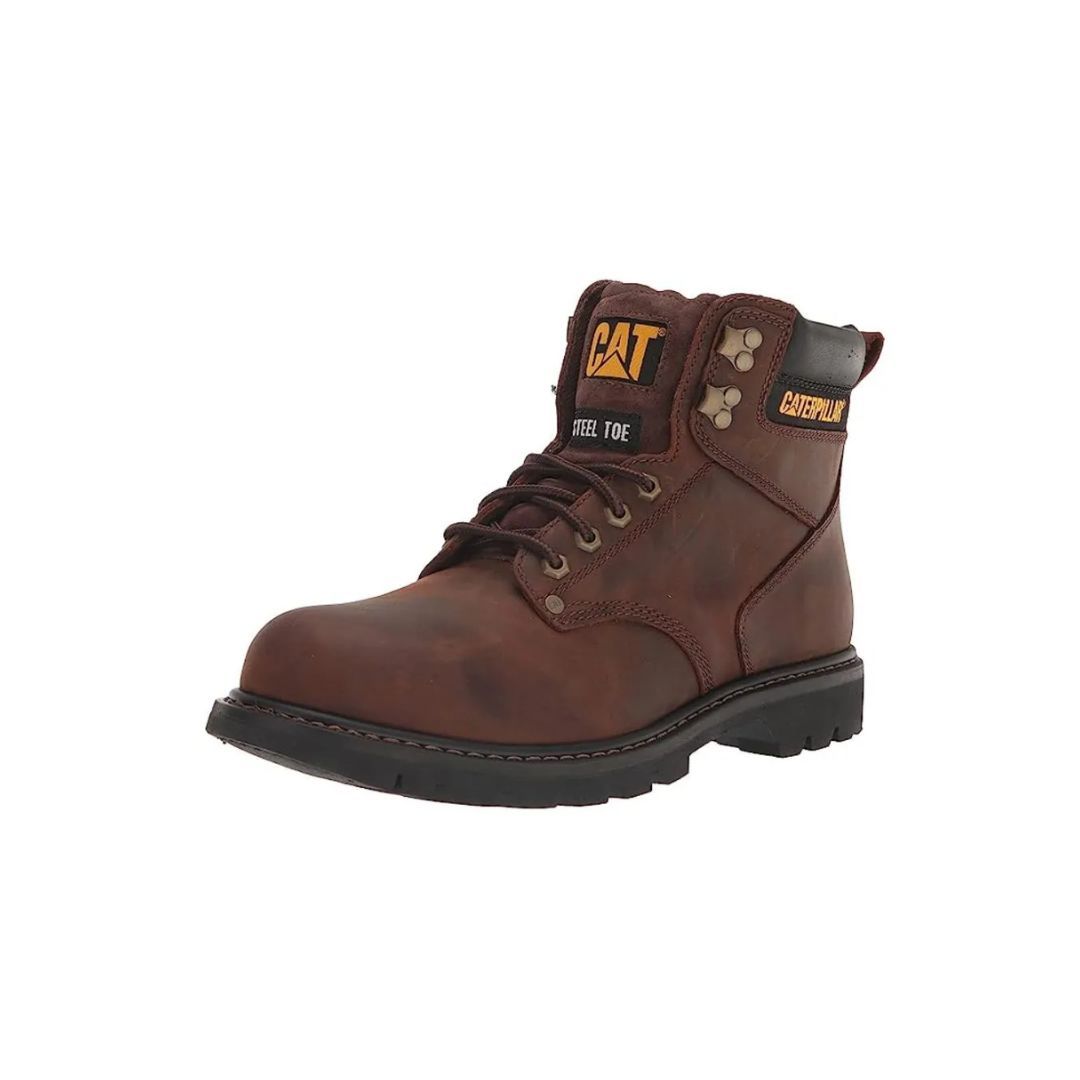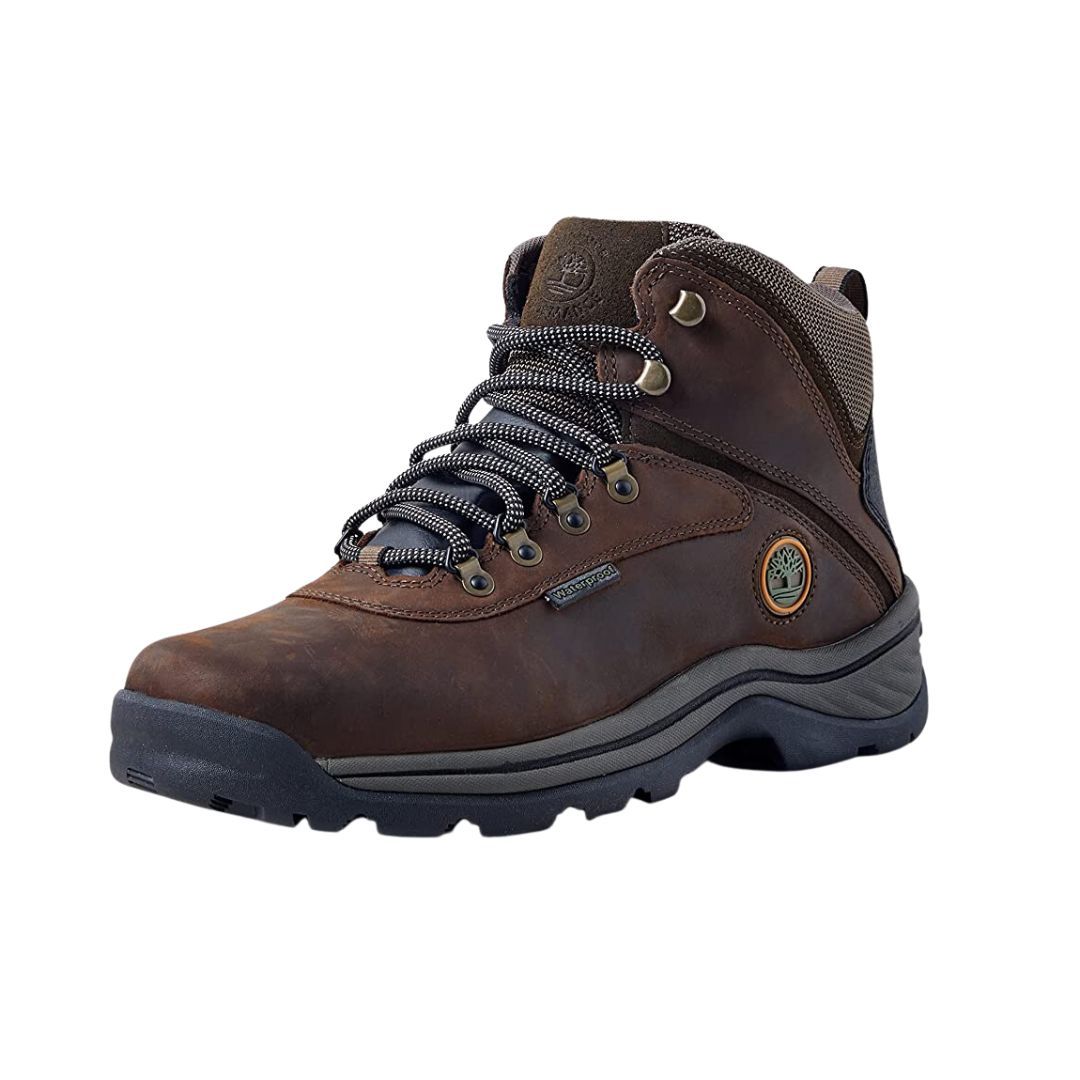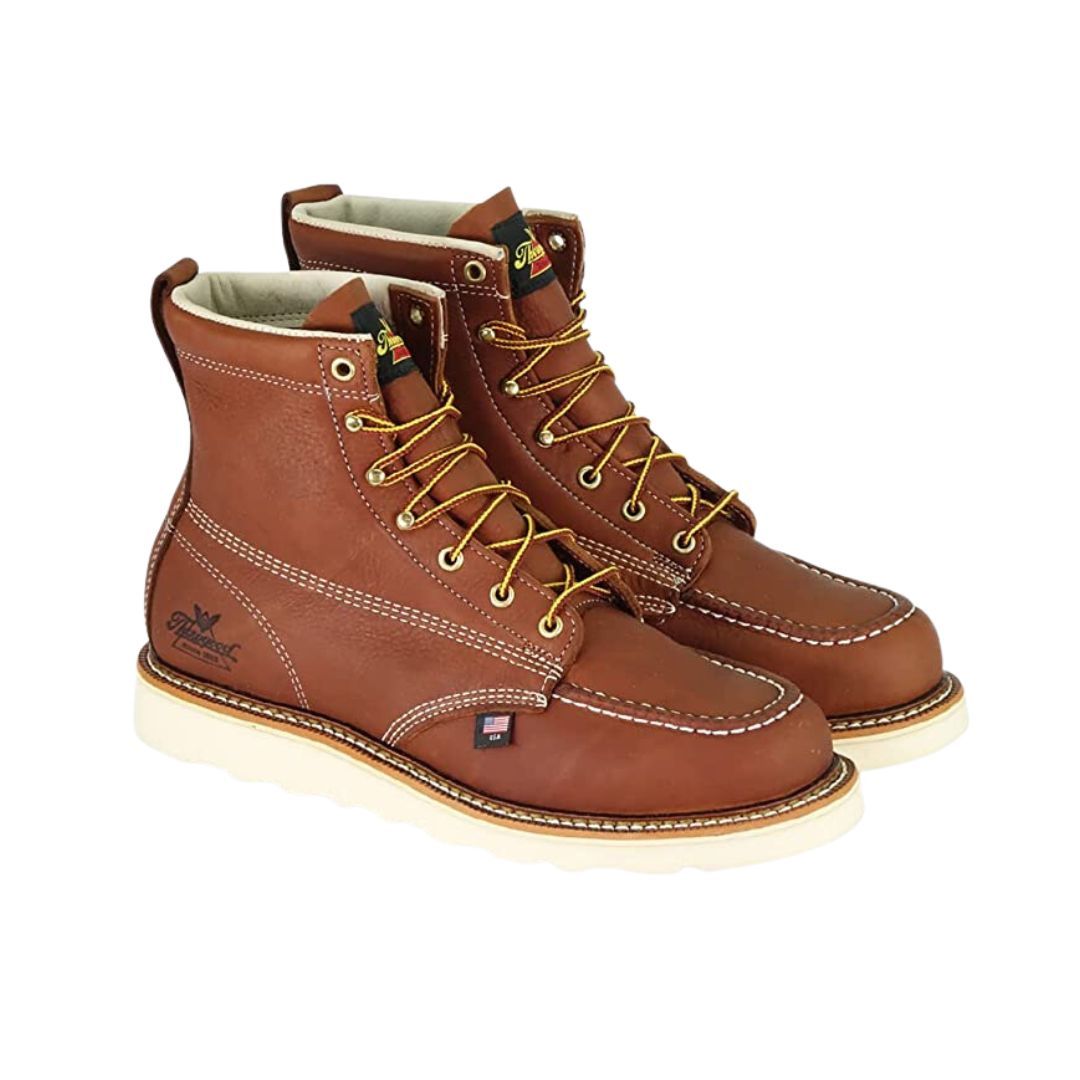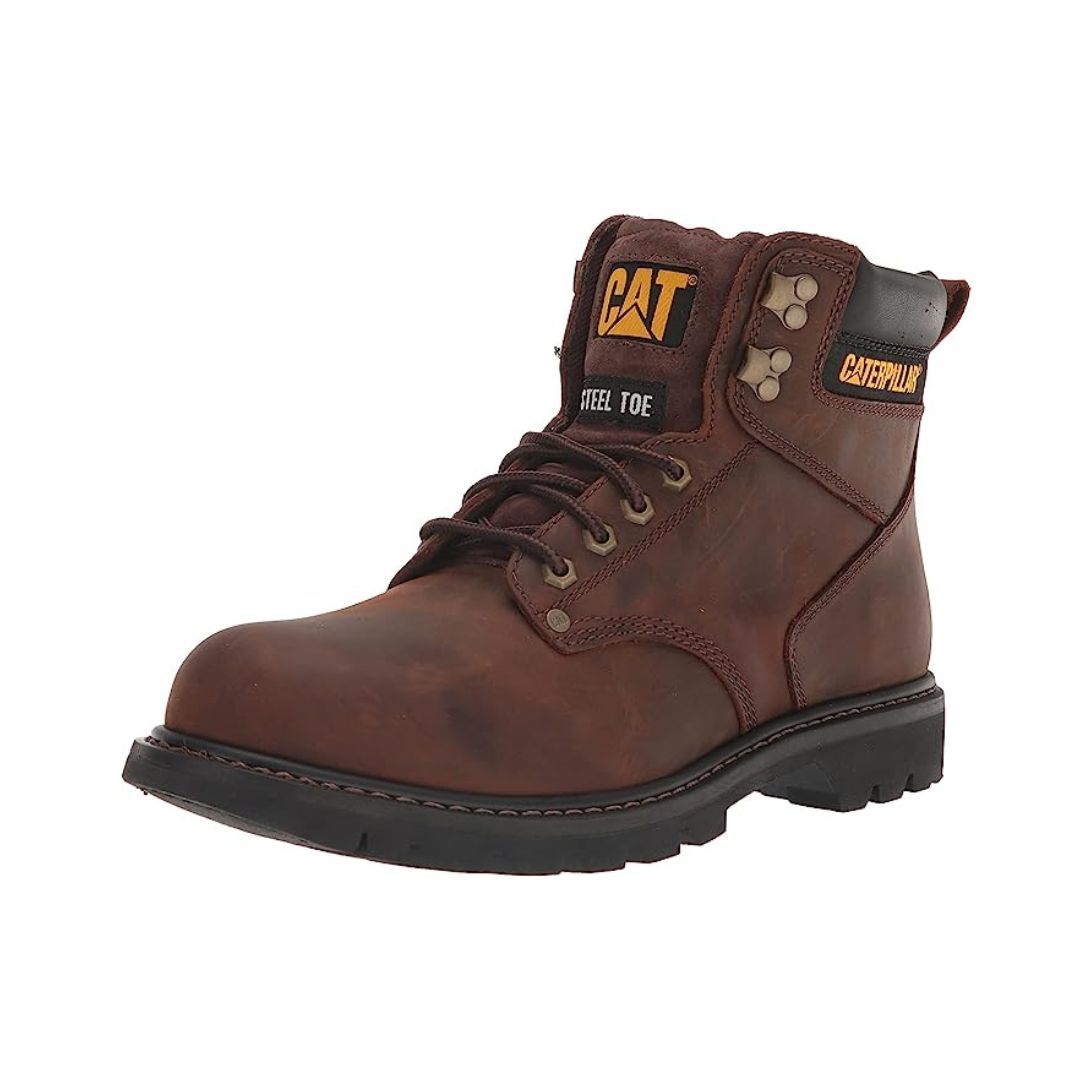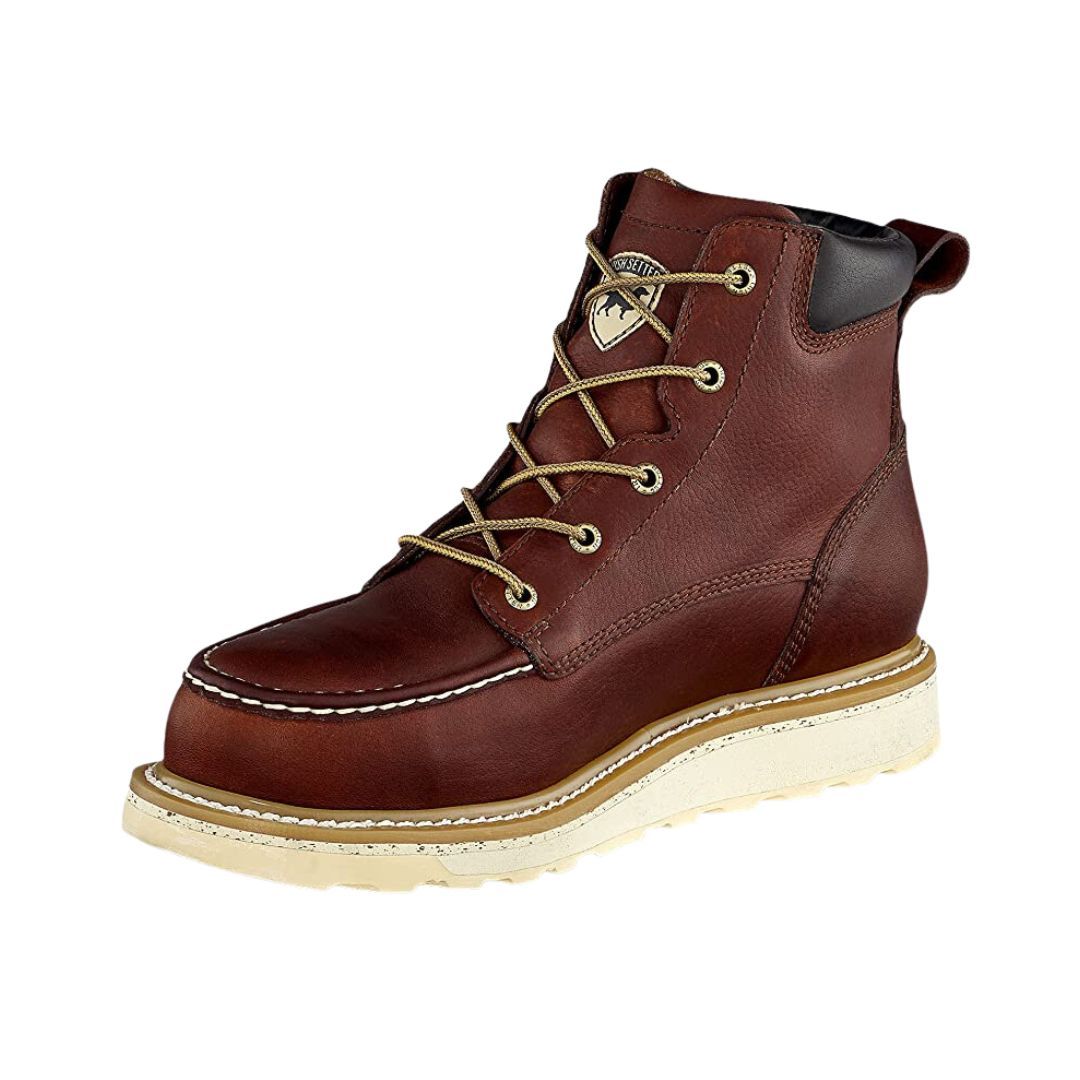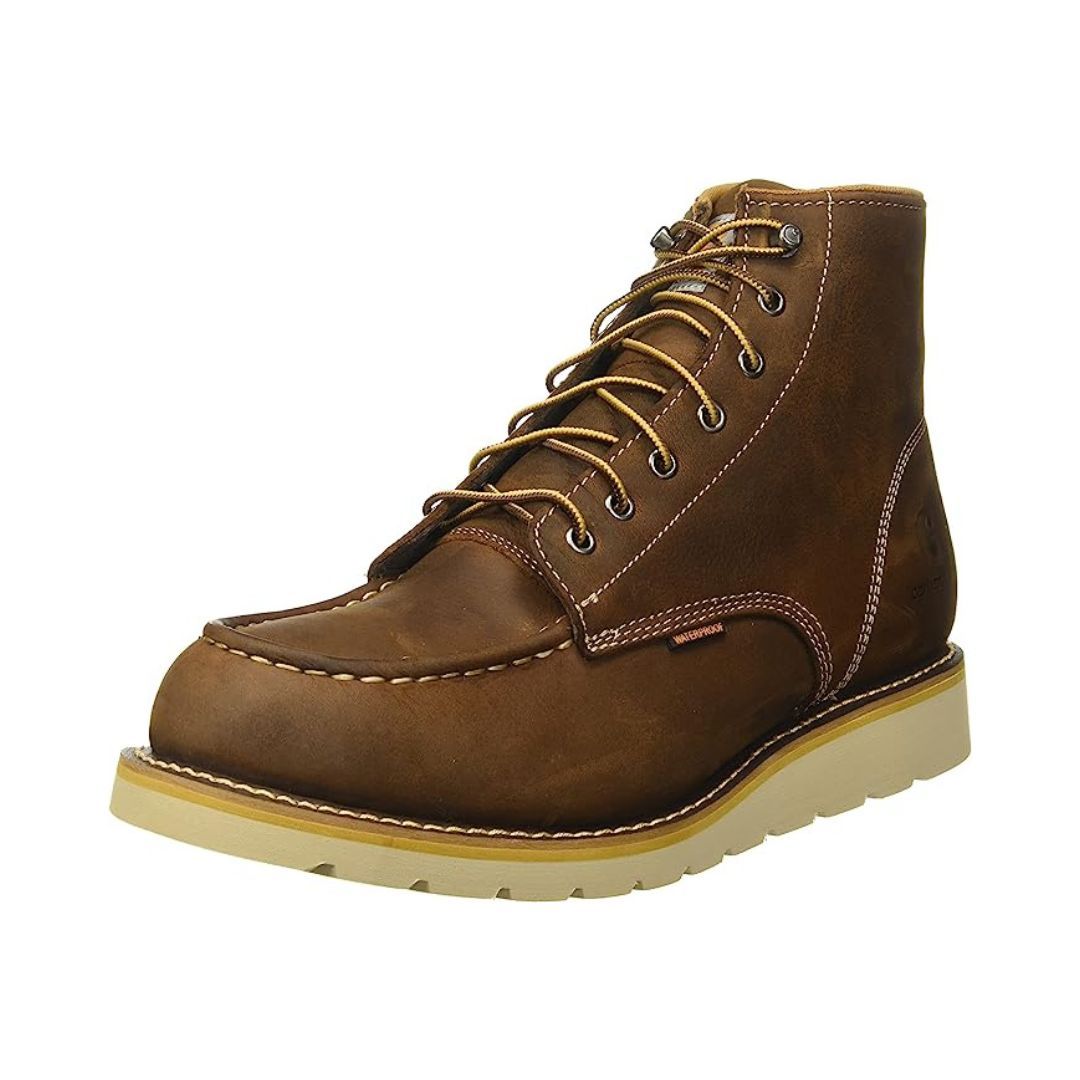We may be compensated if you purchase through links on our website. Our team is committed to delivering honest, objective, and independent reviews on home products and services.
Work boots need to be durable, comfortable, and weather-resistant to protect your feet for months to come. To make your purchasing decision easier, our team researched the best work boots for a range of budgets and purposes.
Here are our top recommendations.
Top 5 Work Boots
*Links open to product retail page.
- Best for Outdoor Use: Timberland Ankle Boots
- Most Customizable: Thorogood Work Boots
- Best Steel-Toe Boot: Caterpillar Steel-Toe Boots
- Most Comfortable: Irish Setter Work Boots
- Best Multipurpose Boot: Carhartt Work Boots
Compare Top Work Boots
| Product | Material | Height | Multiple Size Options | Multiple Color Options |
|---|---|---|---|---|
| Timberland Ankle Boots | Leather and rubber | Ankle | Yes | Yes |
| Thorogood Work Boots | Leather and rubber | Above-Ankle | Yes | Yes |
| Caterpillar Steel-Toe Boots | Leather, rubber, and steel | Above-Ankle | Yes | Yes |
| Irish Setter Work Boots | Leather and rubber | Above-Ankle | Yes | No |
| Carhartt Work Boots | Leather and rubber | Above-Ankle | Yes | Yes |
| Product | Material | Height | Multiple Size Options | Multiple Color Options |
Best Work Boots for Outdoor Use
Pros and Cons
✔ Has compression-molded midsoles
✔ Has rust-resistant lace hardware
✔ Weighs just over one pound per boot
✘ May need some time to be broken in
✘ Doesn’t have as much ankle support as most work boots
What Customers Are Saying
We found that most customers were pleased with how well these boots fit their feet. They also said that they stood up to snowstorms, puddles, and more. However, some customers said that they wore down after continued use.
Most Customizable
Pros and Cons
✔ Made of high-quality leather
✔ Has oil-resistant and slip-resistant outsole
✔ Has a removable, shock-absorbing insole
✘ Costs more than similar boots
✘ Has laces that often come loose and are hard to lace-up
What Customers Are Saying
Our research showed that satisfied customers said these comfortable work boots were durable, felt good, and were made with high-quality leather. However, those who were unsatisfied with their purchase claimed that these boots were too skinny and difficult to break in.
Best Steel-Toe Work Boot
Pros and Cons
✔ Has a breathable insole
✔ Can protect against up to 14,000 volts of electricity in dry conditions
✔ Available in several brown and black shades
✘ Doesn’t offer much flexibility
✘ Weighs more than many work boots
What Customers Are Saying
Customers who left positive reviews for these work boots liked that they held up well to harsh conditions and had a stylish design. However, we also noted that some dissatisfied customers thought that they were uncomfortable to wear for long periods of time.
Most Comfortable
Pros and Cons
✔ Has rubber soles designed to reduce electrical hazard
✔ Can withstand temperatures up to 475 degrees Fahrenheit
✔ Available in sizes up to men’s 14
✘ Comes in limited colors
✘ Doesn’t mention having a waterproof membrane
What Customers Are Saying
We found that happy customers thought that these boots were lightweight but sturdy and durable thanks to their leather construction. On the contrary, some customers claimed that the soles started to split after wearing them for a short period of time.
Best Multipurpose Boot
Pros and Cons
✔ Has a breathable membrane that prevents sweating
✔ Designed to be fully waterproof
✔ Made from high-grade, oil-tanned leather
✘ Is a soft-toe work boot, so shouldn’t be worn when you need a lot of protection
✘ Made with thin leather
What Customers Are Saying
Those who left positive reviews for these work boots said that they had comfortable insoles and stood up well to water. We did find some negative reviews that said they had insufficient traction. Others said that they had an unpleasant, chemical-like odor.
Buying Guide to Work Boots
To get the most out of your next pair of work boots, we recommend first considering what material they’re made of, what kind of protection they provide, and these other important factors:
Protection
Most work boots are designed to protect users during a variety of projects and job sites. Two of the most common protections work boots offer are impact and shock absorption.
Impact resistance is provided through steel-toe work boots and safety-toe work boots. These work boots have reinforced toe protection that prevents injuries by reducing the impact and pressure felt from heavy debris that might fall while you’re working.
Shock resistance is particularly important for homeowners who work around electrical wiring. These boots are constructed with materials that reduce the conduction of electricity and the severity of an electrical shock.
Other boots offer other types of protection, such as cushioned or puncture-resistant footbeds, composite safety toes, and electrical hazard protection.
Material
Most work boots are constructed using leather because of this material’s comfort, moisture-wicking absorption, and durability. However, not all leather boots have the same qualities. For example, some leather waterproof work boots have special stitching that creates a waterproof seal. Others have an oil-tanned design that gives off a weathered and stylish look. Some work boots are made from other materials, such as polyurethane.
Length
A boot’s length is measured from the bottom of the outsole to the top of the opening. Most boots are six inches in length to protect the entire foot. However, some boots have a shorter length to increase mobility and reduce the overall weight of the shoes.
Traction
Having a non-slip grip isn’t just a convenience—it’s often necessary for your worksite per the Occupational Safety and Health Administration’s standards. Thick, textured rubber soles are an important safety feature that helps you navigate uneven terrain with sure-footed confidence.
Longevity
You may wince seeing prices for quality work shoes, but it’s worth shelling out for a good pair. Not only will they last longer than a comparatively cheaper pair, but they’ll also make each day spent on your worksite more comfortable and enjoyable. When you consider how often you’ll be wearing your boots and how much wear and tear you’ll be subjecting them to, it’s a no-brainer to spend a little more upfront to save a lot in the long run.
Style
Your worksite may not require stylish footwear, but plenty of leather work boots have an attractive look. If your job involves working indoors or interacting with customers, consider finding something that is protective but also looks nice and matches a variety of outfits, such as boots with a Wellington design.
Brand
While there are hundreds of brands that make work boots, consider buying your next pair from one of the following brands to ensure they are high quality.
- Ariat
- BRUNT
- Caterpillar
- Carhartt
- Carolina
- Chippewa
- Danner
- Dr. Martens
- Grenson
- Irish Setter
- Keen
- Red Wing
- Thorogood
- Thorogood
- Timberland
- Timberland Pro
- Wolverine
Maintaining Your Work Boots
Regardless of if you’re a logger, hiker, or any type of outdoor worker, how long your boots last is dependent on how you care for them as well as how durable they are. Below, our team put together some tips to help you maintain your work boots.
- Use mink oil or another leather conditioner to keep the upper part of your boots supple, flexible, and water-resistant.
- Due to the demanding nature of many worksites, make sure to regularly inspect your boots before or after the workday. Your boots may be so insulated and protective that you stepped on a nail or screw without realizing it.
- Clear your boots of debris as soon as possible. This includes scraping caked-on mud from the outsole. Mud-filled tread severely reduces traction, and ground-in dirt could result in abrasions and other premature wear.
- To avoid bad odors, air out your boots when they’re not in use. We recommend using a dedicated shoe stand. If your boots start to develop a smell, purchase shoe fresheners.
Work Boot FAQs
How long should a pair of work boots last?
The lifespan of your work boots depends on a variety of factors, including your work environment and frequency of use. However, in general, a high-quality pair of boots should last for around a year.
How do I break in a new pair of work boots?
To break in your work boots, wear them around the house a few times to stretch the new material. You can also apply a leather conditioner to their surface for enhanced flexibility or install a support insole for more padding and arch support.
Should my toes touch the end of my work boots?
No. Properly fitting work boots will allow you to move your toes slightly.
Do work boots usually fit true-to-size?
Your normal shoe size may work for a work boot, but in general, we recommend moving up about half a size. This is especially the case if you’re working outside in cold temperatures and wearing thick wool socks.
Will cushioned running shoes feel more comfortable than work boots?
More than likely, yes. However, although there are some athletic shoes that offer additional gripping and waterproofing, they won’t be nearly as rigid, warm, or protective as true work boots.
How We Selected the Best Work Boots
To provide our readers with the best recommendations possible, we rely on several key sources of information to help guide our selection process.
Initial Research: Our research process began by generating a list of [products] with a significant number of verified-buyer reviews and an average customer review rating of 4–5 stars. We looked at positive and negative reviews alike, focusing on information from both satisfied and critical buyers.
Expert Insights: Through our years of experience, we’ve learned that listening to what others have to say is key to building accurate, well-rounded articles. To complement our in-house expertise, our team looked at reviews and videos from trusted publications and independent testers, spoke with subject matter experts, and drew insights from reader contributions.
Final Product Selection: We then began fine-tuning our list by replacing older models with the latest versions and eliminating any discontinued models. From there, we pared the list down further by comparing each model’s feature set and selecting the best-in-class options for a variety of buyers, budgets, and scenarios.
Why You Can Trust Us
This Old House has empowered homeowners and DIY-ers for more than four decades with top-notch home improvement advice in the form of television programs, print media, and digital content.
Our team focuses on creating in-depth product and service review content. To date, we’ve published over 1,600 reviews on products in the home space, from doorbell cameras and backyard fencing to pool vacuums and snow blowers.
Once we conclude our research, we craft a comprehensive, user-friendly article of recommended products and additional information to help our readers make the right purchase.
Questions or Comments?
To share feedback or ask a question about this article, send a note to our team at reviews@thisoldhousereviews.com.
